Behavior of Non-Shear-Strengthened UHPC Beams under Flexural Loading: Influence of Reinforcement Depth
Abstract
1. Introduction
1.1. Background
1.2. Research Goal and Objectives
2. Experimental Process/Program
2.1. Development of UHPC
2.1.1. Materials
2.1.2. Experimental Program
2.2. Mechanical Properties of the UHPC
2.3. Testing of UHPC Beams
2.3.1. Details of Specimens
2.3.2. Details of the Testing System
3. Results and Discussion
3.1. Modes of Failure and Crack Pattern
3.2. Load-Deflection Response
3.3. Ductility Analysis
3.4. Load–Strain Response
3.5. Load-Crack Width Response
3.6. Moment–Curvature Relations
3.7. Prediction of the Ultimate Moment Capacity of UHPC Beams
4. Conclusions
Author Contributions
Funding
Institutional Review Board Statement
Informed Consent Statement
Data Availability Statement
Acknowledgments
Conflicts of Interest
References
- Yang, I.H.; Joh, C.; Kim, B.-S. Structural behavior of ultra high performance concrete beams subjected to bending. Eng. Struct. 2010, 32, 3478–3487. [Google Scholar] [CrossRef]
- Aïtcin, P.-C. Cements of yesterday and today: Concrete of tomorrow. Cem. Concr. Res. 2000, 30, 1349–1359. [Google Scholar] [CrossRef]
- Cheyrezy, M.; Maret, V.; Frouin, L. Microstructural analysis of RPC (reactive powder concrete). Cem. Concr. Res. 1995, 25, 1491–1500. [Google Scholar] [CrossRef]
- Richard, P.; Cheyrezy, M. Composition of reactive powder concretes. Cem. Concr. Res. 1995, 25, 1501–1511. [Google Scholar] [CrossRef]
- Behloul, M.; Bernier, G.; Cheyrezy, M. Tensile behavior of reactive powder concrete (RPC). In Proceedings of the 4th International Symposium on Utilization of HSC/HPC, BHP, Paris, France, 29–31 May 1996; pp. 1375–1381. [Google Scholar]
- Oh, B.H. Flexural analysis of reinforced concrete beams containing steel fibers. J. Struct. Eng. 1992, 118, 2821–2835. [Google Scholar] [CrossRef]
- Oh, B.H. Flexural Analysis of Reinforced Concrete Beams Containing Steel Fibers. Discussion And Closure. J. Struct. Eng. 1994, 120, 1932–1934. [Google Scholar]
- Ashour, S.A.; Wafa, F.F. Flexural behavior of high-strength fiber reinforced concrete beams. Struct. J. 1993, 90, 279–287. [Google Scholar]
- Campione, G.; Mangiavillano, M.L. Fibrous reinforced concrete beams in flexure: Experimental investigation, analytical modelling and design considerations. Eng. Struct. 2008, 30, 2970–2980. [Google Scholar] [CrossRef]
- Lim, D.; Oh, B. Experimental and theoretical investigation on the shear of steel fibre reinforced concrete beams. Eng. Struct. 1999, 21, 937–944. [Google Scholar] [CrossRef]
- Chunxiang, Q.; Patnaikuni, I. Properties of high-strength steel fiber-reinforced concrete beams in bending. Cem. Concr. Compos. 1999, 21, 73–81. [Google Scholar] [CrossRef]
- Ashour, S.A.; Wafa, F.F.; Kamal, M.I. Effect of the concrete compressive strength and tensile reinforcement ratio on the flexural behavior of fibrous concrete beams. Eng. Struct. 2000, 22, 1145–1158. [Google Scholar] [CrossRef]
- Habel, K.; Viviani, M.; Denarié, E.; Brühwiler, E. Development of the mechanical properties of an ultra-high performance fiber reinforced concrete (UHPFRC). Cem. Concr. Res. 2006, 36, 1362–1370. [Google Scholar] [CrossRef]
- Ahmad, S.; Hakeem, I.; Maslehuddin, M. Development of UHPC mixtures utilizing natural and industrial waste materials as partial replacements of silica fume and sand. Sci. World J. 2014, 2014, 713531. [Google Scholar] [CrossRef] [PubMed]
- Trabelsi, A.; Kammoun, Z.; Beddey, A. Seismic retrofitting of a tower with shear wall in UHPC based dune sand. Earthq. Struct. 2017, 12, 591–601. [Google Scholar] [CrossRef]
- Zhu, Y.T.; Xia, D.T.; Zhou, B.R. Experimental study on axial tensile strength of low volume fraction of ternary hybrid fiber reinforced concrete. In Advanced Materials Research; Trans Tech Publ: Zurich, Switzerland, 2014; pp. 329–334. [Google Scholar]
- Granger, S.; Loukili, A.; Pijaudier-Cabot, G.; Chanvillard, G. Experimental characterization of the self-healing of cracks in an ultra high performance cementitious material: Mechanical tests and acoustic emission analysis. Cem. Concr. Res. 2007, 37, 519–527. [Google Scholar] [CrossRef]
- Dingqiang, F.; Yu, R.; Kangning, L.; Junhui, T.; Zhonghe, S.; Chunfeng, W.; Shuo, W.; Zhenfeng, G.; Zhengdong, H.; Qiqi, S. Optimized design of steel fibres reinforced ultra-high performance concrete (UHPC) composites: Towards to dense structure and efficient fibre application. Constr. Build. Mater. 2021, 273, 121698. [Google Scholar] [CrossRef]
- Yoo, D.-Y.; Yoon, Y.-S. Structural performance of ultra-high-performance concrete beams with different steel fibers. Eng. Struct. 2015, 102, 409–423. [Google Scholar] [CrossRef]
- Shafieifar, M.; Farzad, M.; Azizinamini, A. A comparison of existing analytical methods to predict the flexural capacity of Ultra High Performance Concrete (UHPC) beams. Constr. Build. Mater. 2018, 172, 10–18. [Google Scholar] [CrossRef]
- Azmee, N.M.; Shafiq, N. Ultra-high performance concrete: From fundamental to applications. Case Stud. Constr. Mater. 2018, 9, e00197. [Google Scholar] [CrossRef]
- Li, J.; Wu, Z.; Shi, C.; Yuan, Q.; Zhang, Z. Durability of ultra-high performance concrete–A review. Constr. Build. Mater. 2020, 255, 119296. [Google Scholar] [CrossRef]
- Blais, P.Y.; Couture, M. Precast, Prestressed Pedestrian Bridge-World’s First Reactive Powder Concrete Bridge. PCI J. 1999, 44, 60–71. [Google Scholar] [CrossRef]
- Behloul, M.; Lee, K. Ductal® seonyu footbridge. Struct. Concr. 2003, 4, 195–201. [Google Scholar] [CrossRef]
- Hajar, Z.; Lecointre, D.; Simon, A.; Petitjean, J. Design and construction of the world first ultra-high performance concrete road bridges. In Proceedings of the International Symposium on Ultra High Performance Concrete, Kassel, Germany, 13–15 September 2004; pp. 39–48. [Google Scholar]
- Kaptijn, N.; Blom, J. A new bridge deck for the Kaag Bridges the first CRC (Compact Reinforced Composite) application in civil infrastructure. Sci. Eng. Compos. Mater. 2002, 10, 397–402. [Google Scholar] [CrossRef]
- Muttoni, A.; Brauen, U.; Jaquier, J.-L.; Moullet, D. A new roof for the olympic museum at Lausanne, Switzerland. In Proceedings of the International Symposium on Ultra-High Performance Fiber-Reinforced Concrete, Marseille, France, 1–3 October 2013; pp. 69–76. [Google Scholar]
- Menétrey, P. UHPFRC cladding for the Qatar National Museum. In Proceedings of the International Symposium on Ultra-High Performance Fiber-Reinforced Concrete, Marseille, France, 1–3 October 2013. [Google Scholar]
- Fabbri, R.; Corvez, D. Rationalisation of complex UHPFRC facade shapes. In Proceedings of the International Symposium on Ultra-High Performance Fiber-Reinforced Concrete, Marseille, France, 1–3 October 2013; pp. 27–36. [Google Scholar]
- Hajar, Z.; Novarin, M.; Servant, C.; Généreux, G.; Przybyla, D.; Bitar, D. Innovative solution for strengthening orthotropic decks using UHPFRC: The Illzach bridge. In Proceedings of the International Symposium on Ultra-High Performance Fiber-Reinforced Concrete, Marseille, France, 1–3 October 2013; pp. 117–126. [Google Scholar]
- Moreillon, L.; Menétrey, P. Rehabilitation and strengthening of existing RC structures with UHPFRC: Various applications. In Proceedings of the RILEM-fib-AFGC International Symposium on Ultra-High Performance Fibre-Reinforced Concrete, Marseille, France, 1–3 October 2013; pp. 127–136. [Google Scholar]
- Denarié, E.; Jacomo, D.; Fady, N.; Corvez, D. Rejuvenation of Maritime Signalisation Structures with UHPFRC. In Proceedings of the RILEM-fib-AFGC International Symposium on Ultra-High Performance Fibre-Reinforced Concrete, UHPFRC 2013, Marseille, France, 1–3 October 2013. [Google Scholar]
- Mazzacane, P.; Ricciotti, R.; Teply, F.; Tollini, E.; Corvez, D. MUCEM: The builder’s perspective. Proc. UHPFRC 2013, 3–16. [Google Scholar]
- Long, G.; Wang, M.; Xie, Y.; Ma, K. Experimental investigation on dynamic mechanical characteristics and microstructure of steam-cured concrete. Sci. China Technol. Sci. 2014, 57, 1902–1908. [Google Scholar] [CrossRef]
- Leonhardt, S.; Lowke, D.; Gehlen, C. Effect of Fibres on Impact Resistance of Ultra High Perfomance Concrete. In Proceedings of the 3rd International Symposium on UHPC and Nanotechnology for High Performance Construction Material, Kassel, Germany, 7–9 March 2012; pp. 811–817. [Google Scholar]
- Yang, I.H.; Park, J.; Bui, T.Q.; Kim, K.C.; Joh, C.; Lee, H. An Experimental Study on the Ductility and Flexural Toughness of Ultrahigh-Performance Concrete Beams Subjected to Bending. Materials 2020, 13, 22. [Google Scholar] [CrossRef]
- AFGC. Bétons Fibrés à Ultra-hautes Performances; Association Française du Génil Civil (AFGC) Setra: Paris, France, 2002. [Google Scholar]
- JSCE. Recommendations for Design and Construction of Ultra High Strength Fiber Reinforced Concrete Structures (Draft); JSCE: Tokyo, Japan, 2004. [Google Scholar]
- Deutscher Ausschuss für Stahlbeton. State-of-the-Art Report on Ultra High Performance Concrete—Concrete Technology and Design; Deutscher Ausschuss für Stahlbeton/German. Association for Reinforced Concrete: Berlin, Germany, 2003; Volume 3. [Google Scholar]
- Johansen, V.; Andersen, P. Particle Packing and Concrete Properties: Materials Science of Concrete; The American Ceramic Society Inc.: Westerville, OH, USA, 1992. [Google Scholar]
- Stovall, T.; De Larrard, F.; Buil, M. Linear packing density model of grain mixtures. Powder Technol. 1986, 48, 1–12. [Google Scholar] [CrossRef]
- Goltermann, P.; Johansen, V.; Palbøl, L. Packing of aggregates: An alternative tool to determine the optimal aggregate mix. Mater. J. 1997, 94, 435–443. [Google Scholar]
- Hatem, M.; Pusch, R.; Al-Ansari, N.; Knutsson, S.; Emborg, M.; Nilsson, M.; Alireza, P. Talc-based concrete for sealing borehole optimized by using particle packing theory. J. Civ. Eng. Archit. 2013, 7, 440–455. [Google Scholar] [CrossRef][Green Version]
- Kumar, S.; Santhanam, M. Particle packing theories and their application in concrete mixture proportioning: A review. Indian Concr. J. 2003, 77, 1324–1331. [Google Scholar]
- Ma, J.; Orgass, M.; Dehn, F.; Schmidt, D.; Tue, N. Comparative investigations on ultra-high performance concrete with and without coarse aggregates. In Proceedings of the International Symposium on Ultra High Performance Concrete, Kassel, Germany, 13–15 September 2004; pp. 205–212. [Google Scholar]
- Sneed, L.H.; Ramirez, J.A. Influence of Effective Depth on Shear Strength of Concrete Beams--Experimental Study. ACI Struct. J. 2010, 107. [Google Scholar]
- Bernardo, L.; Lopes, S. Neutral axis depth versus flexural ductility in high-strength concrete beams. J. Struct. Eng. 2004, 130, 452–459. [Google Scholar] [CrossRef]
- Bernardo, L.; Nepomuceno, M.; Pinto, H. Neutral axis depth versus ductility and plastic rotation capacity on bending in lightweight-aggregate concrete beams. Materials 2019, 12, 3479. [Google Scholar] [CrossRef] [PubMed]
- Alin, A. Minitab. In Wiley Interdisciplinary Reviews: Computational Statistics; Wiley: Hoboken, NJ, USA, 2010; Volume 2, pp. 723–727. [Google Scholar]
- Ryan, B.F.; Joiner, B.L.; Cryer, J.D. MINITAB Handbook: Update for Release; Cengage Learning: Boston, MA, USA, 2012. [Google Scholar]
- Pourbaba, M.; Sadaghian, H.; Mirmiran, A. Flexural Response of UHPFRC Beams Reinforced with Steel Rebars. Adv. Civ. Eng. Mater. 2019, 8, 411–430. [Google Scholar] [CrossRef]
- Solhmirzaei, R.; Kodur, V. Modeling the response of ultra high performance fiber reinforced concrete beams. Procedia Eng. 2017, 210, 211–219. [Google Scholar] [CrossRef]
- Carpinteri, A.; Accornero, F.; Cafarelli, R. Scale-dependent maximum reinforcement percentage in reinforced concrete beams. Struct. Concr. 2021, 22, 2155–2166. [Google Scholar] [CrossRef]


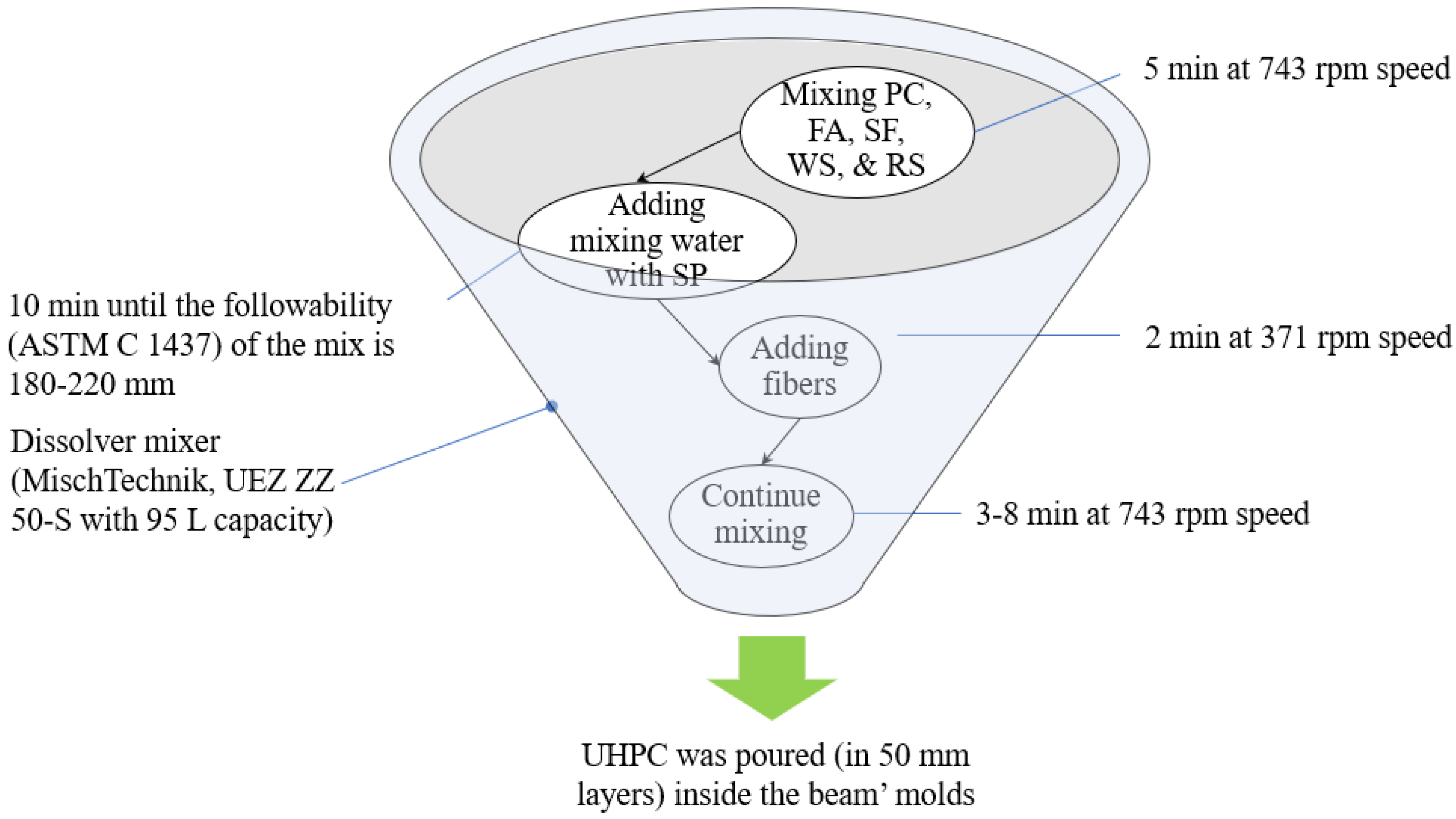
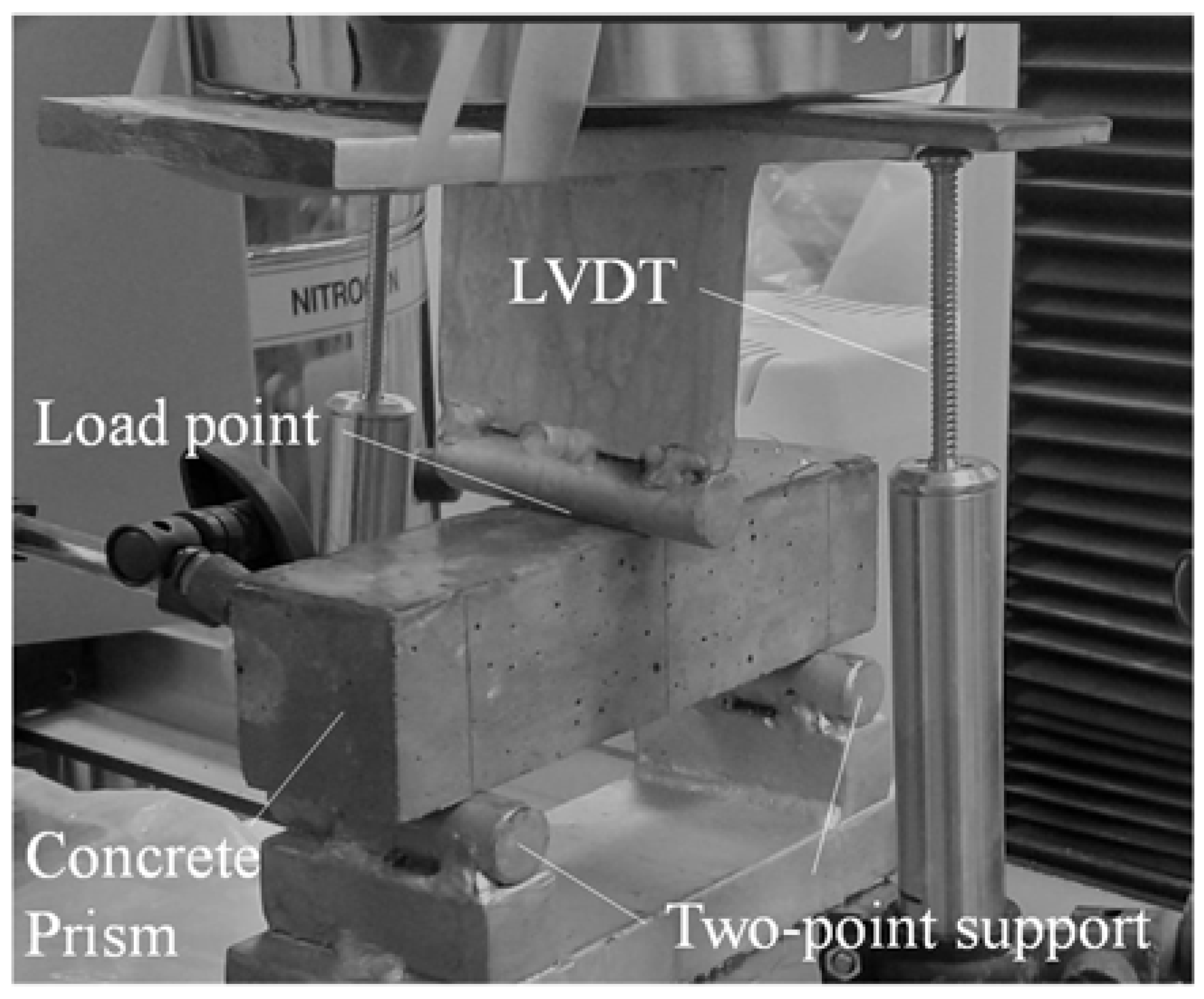
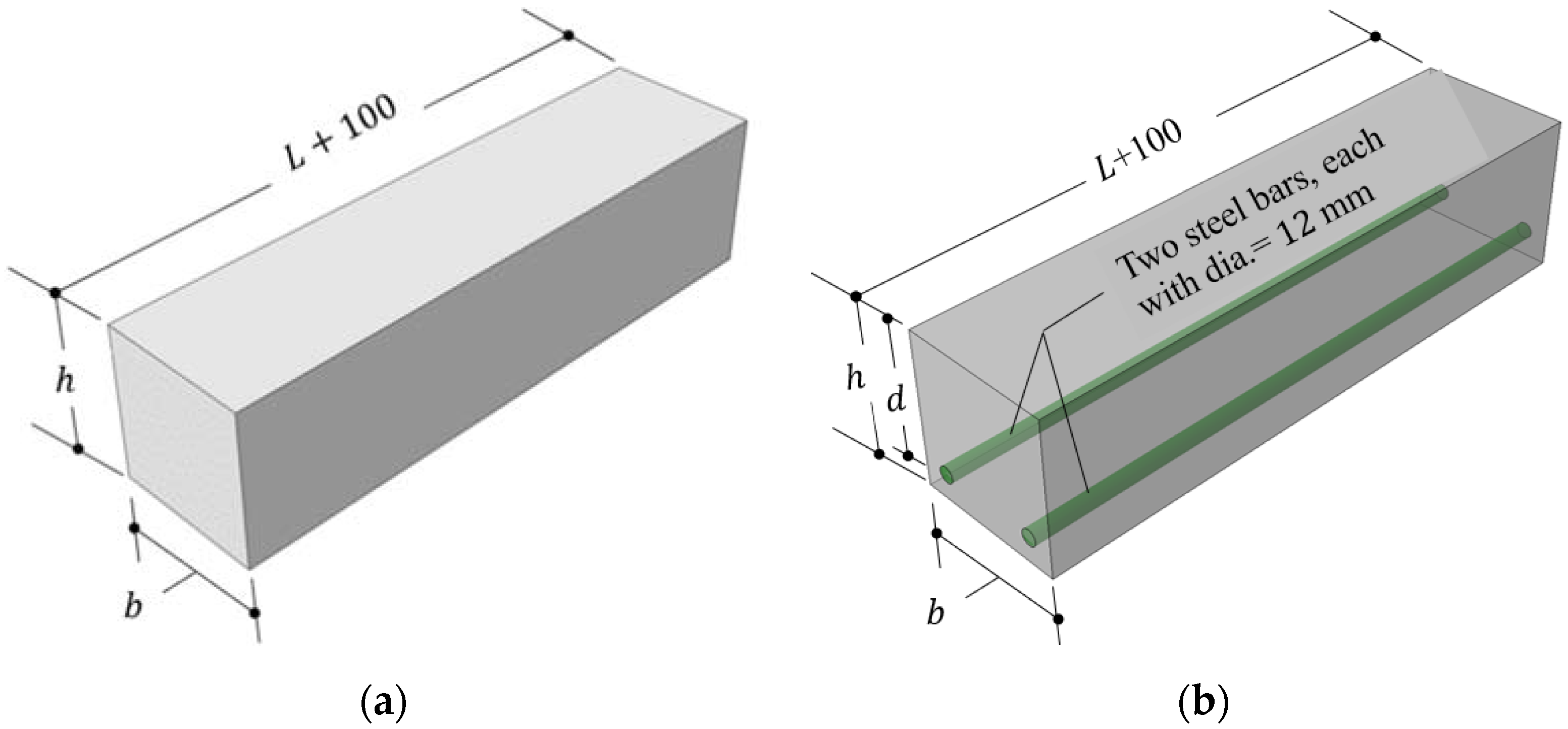


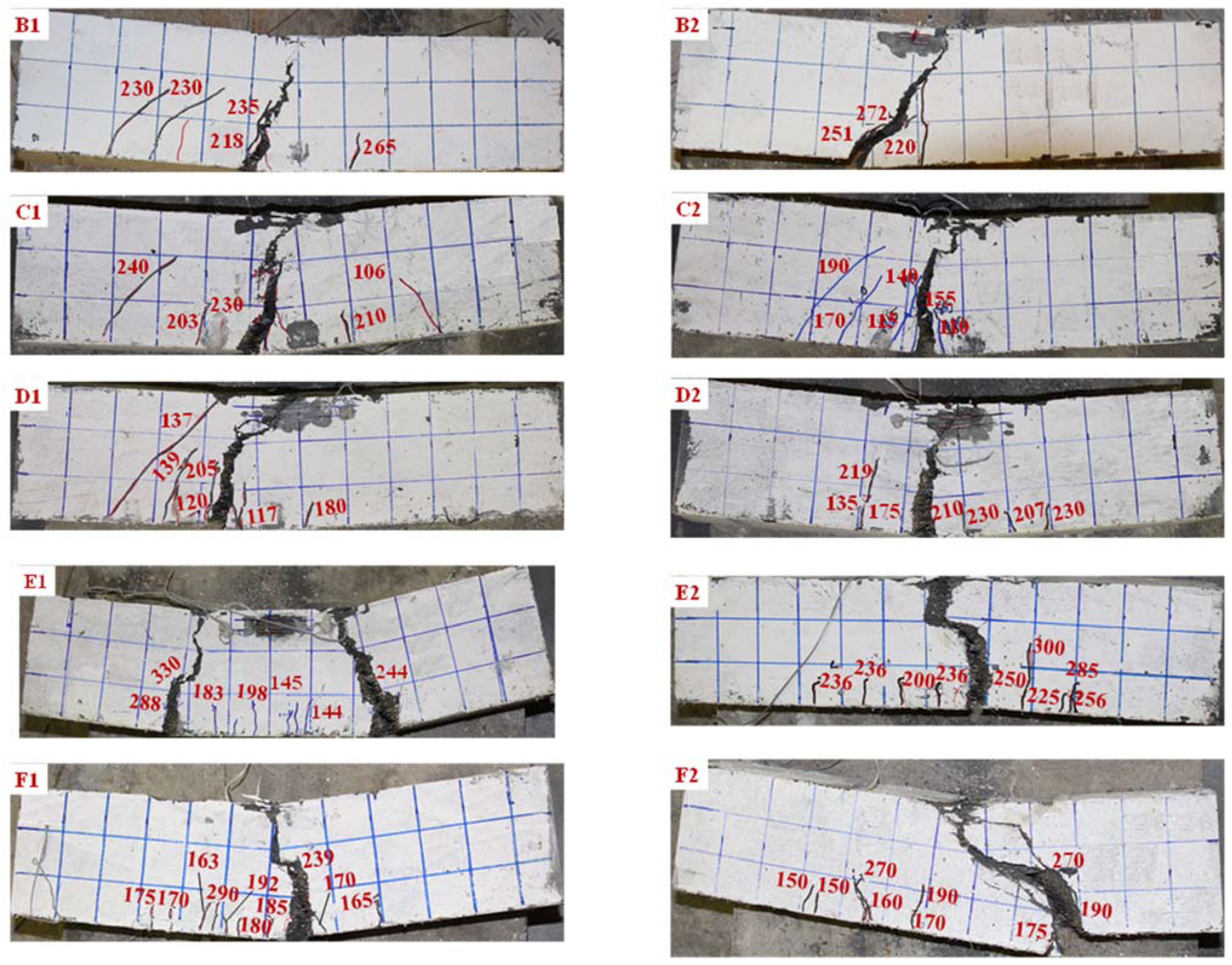
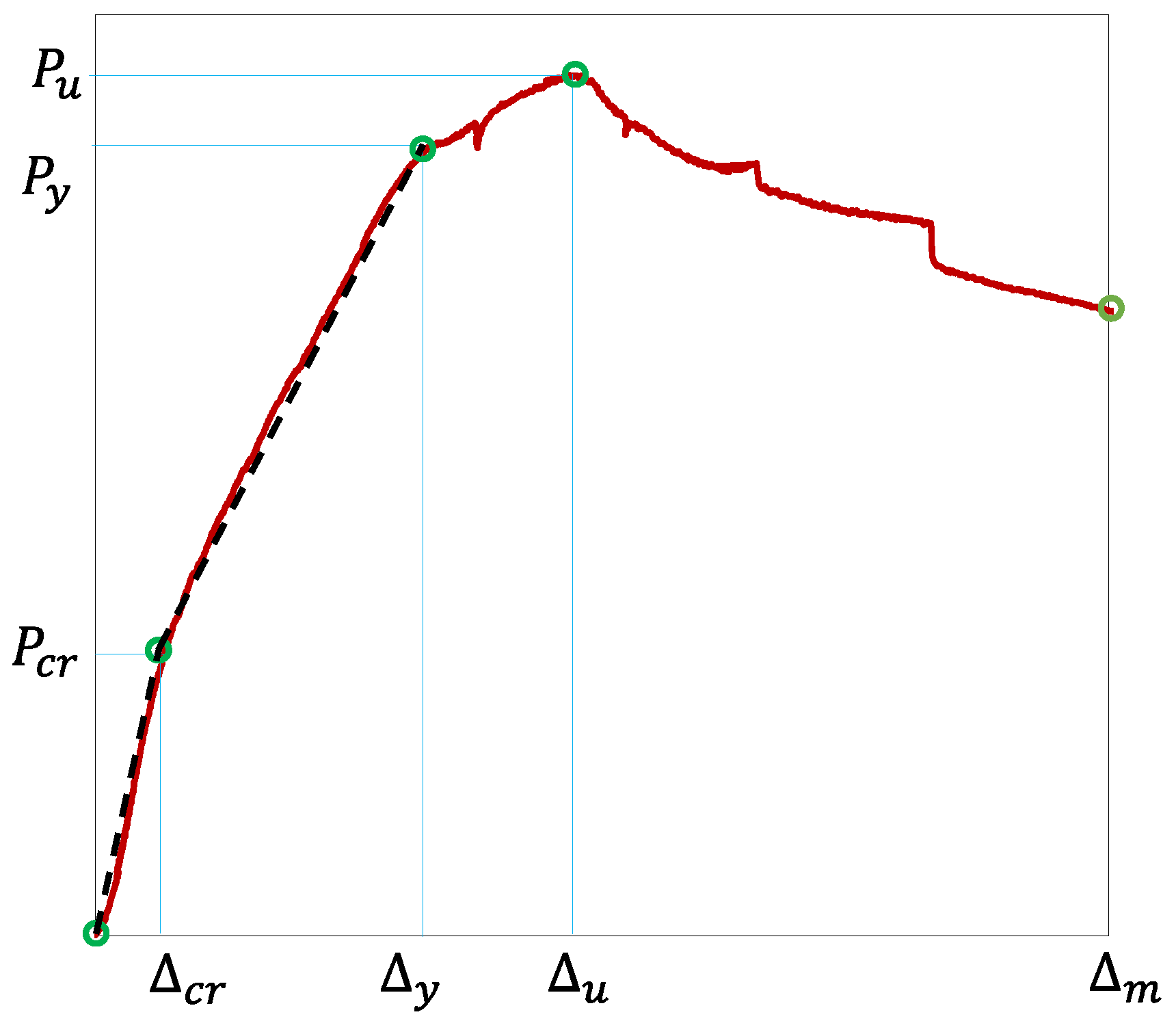

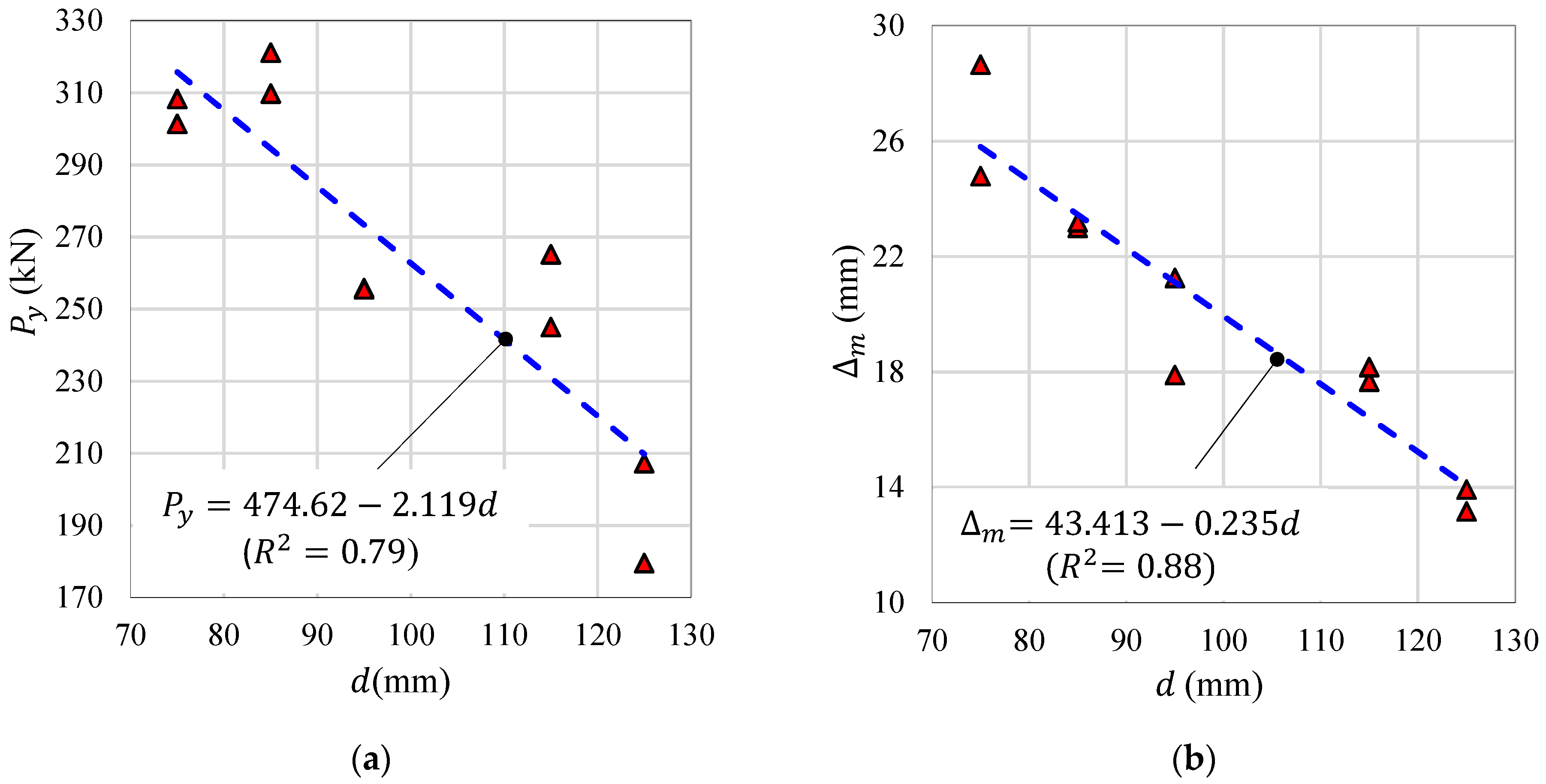
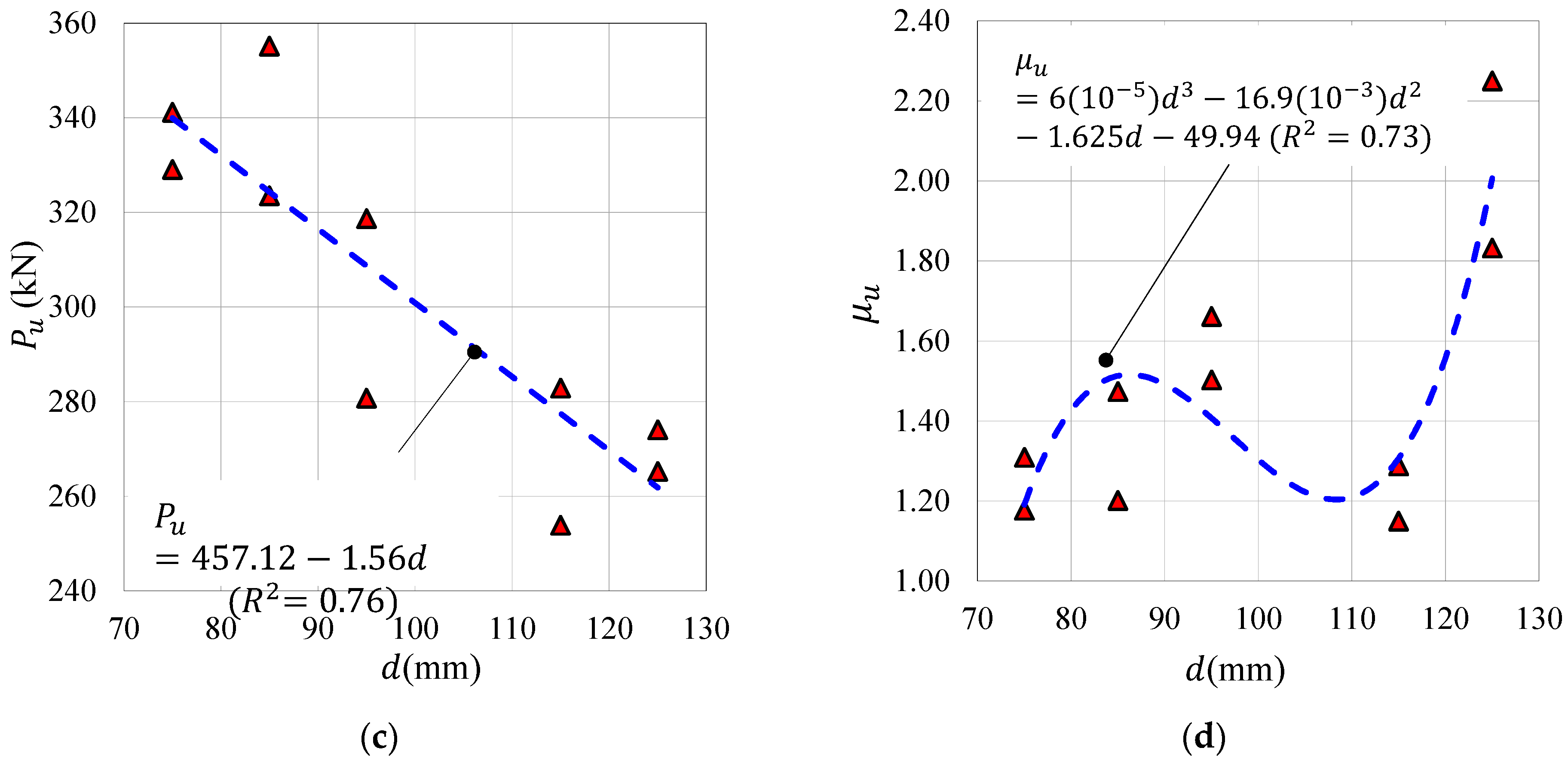
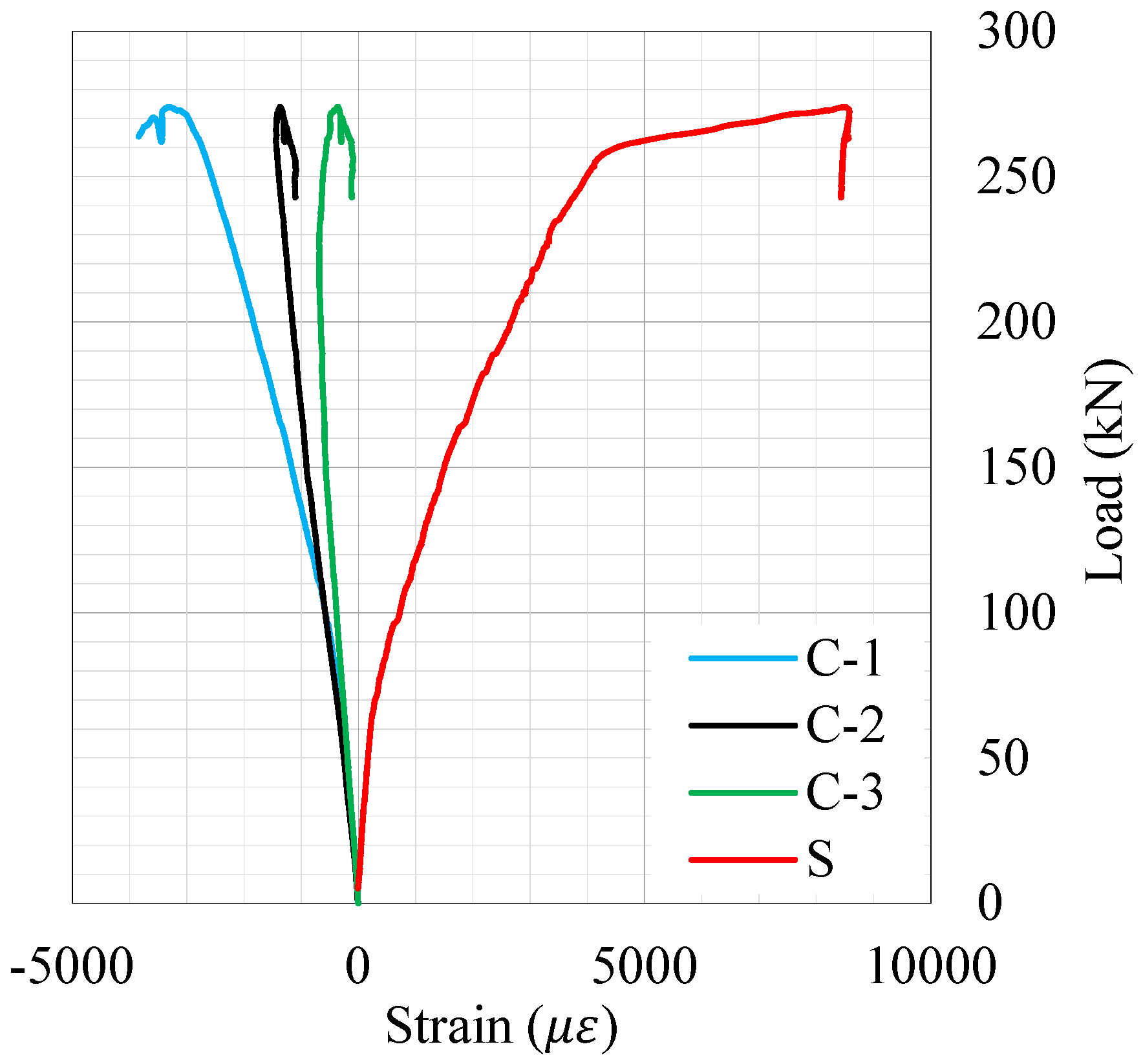
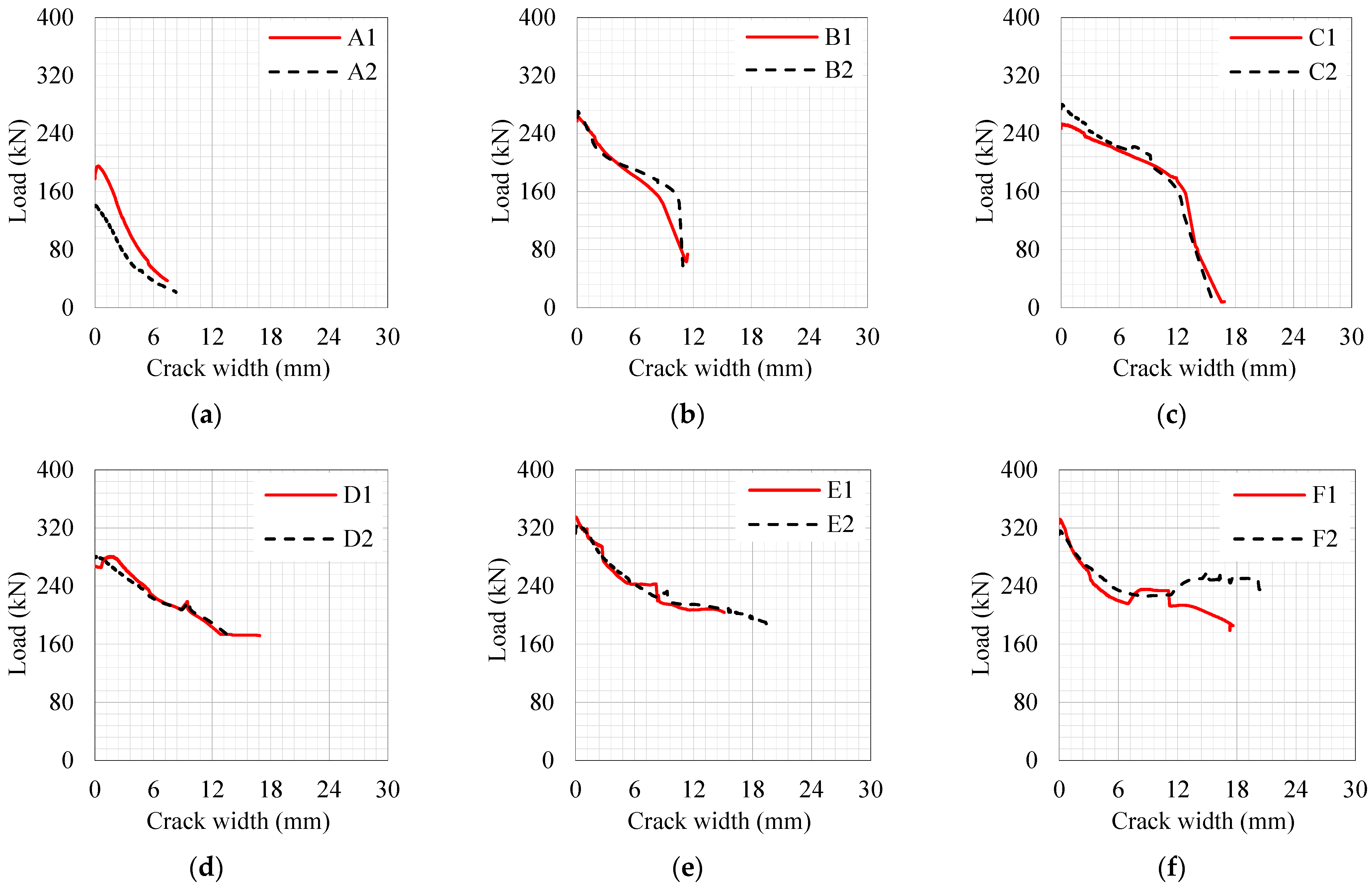
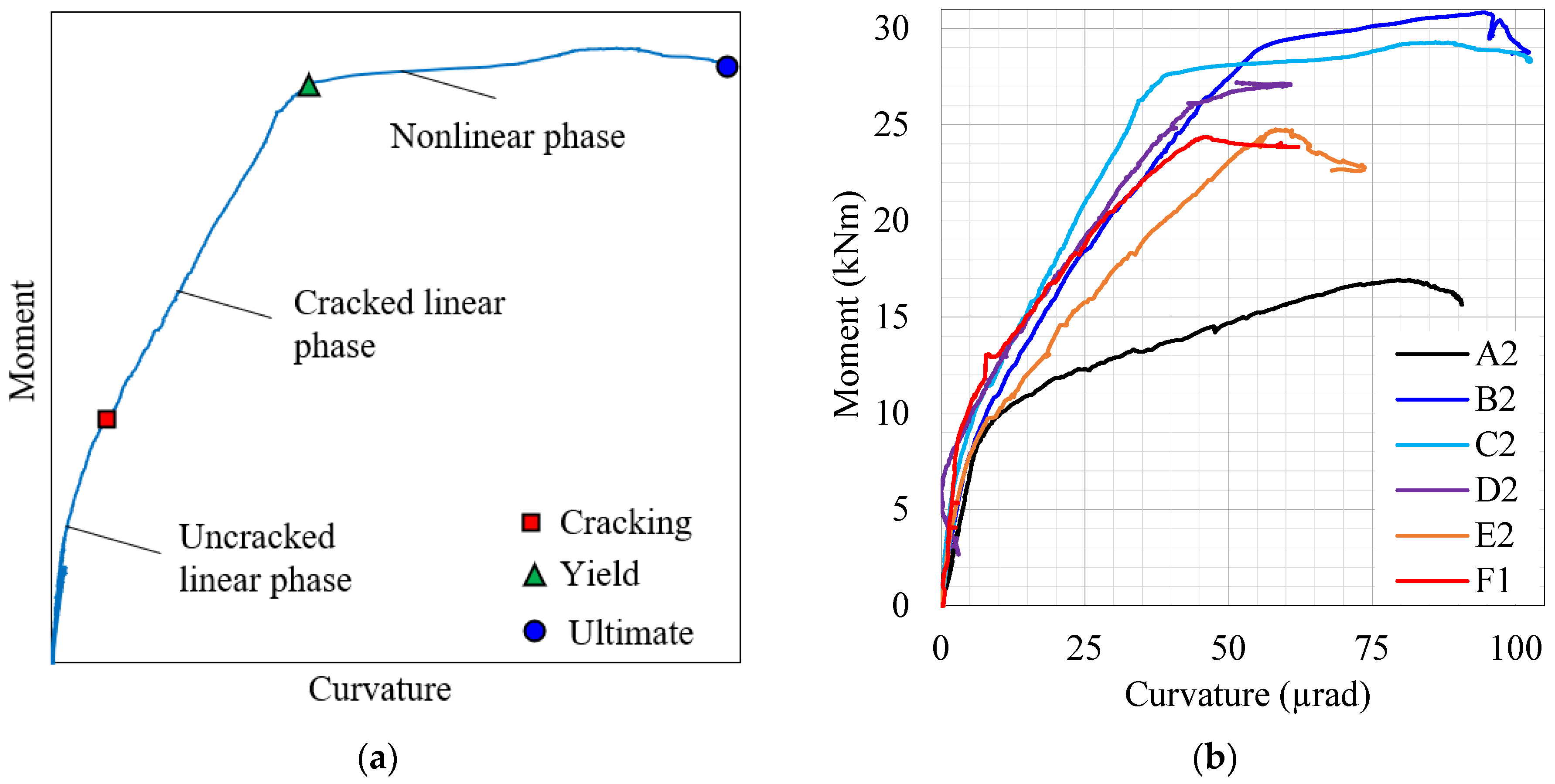
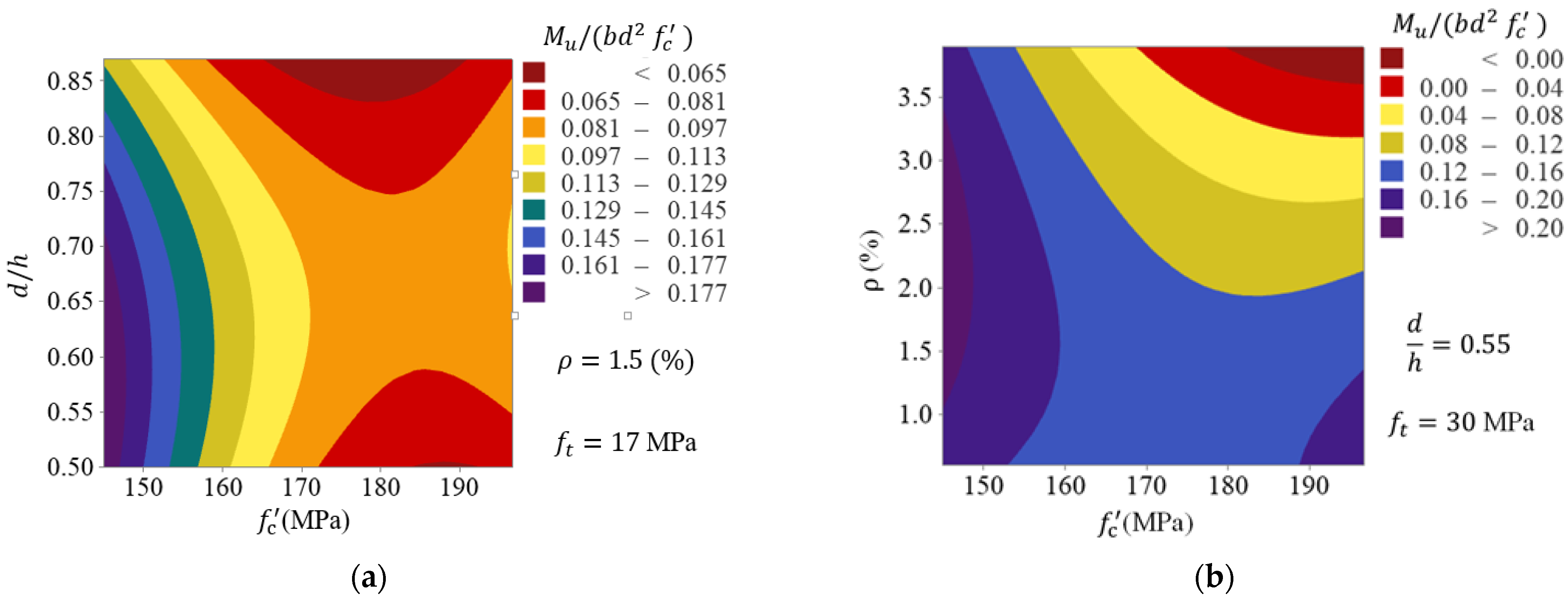
| Oxides (%) | PC | FA | SF |
|---|---|---|---|
| SiO2 | 20.41 | 55.23 | 86.20 |
| Al2O3 | 5.32 | 25.95 | 0.49 |
| Fe2O3 | 4.10 | 10.17 | 3.79 |
| CaO | 64.14 | 1.32 | 2.19 |
| MgO | 0.71 | 0.31 | 1.31 |
| SO3 | 2.44 | 0.18 | 0.74 |
| TiO2 | 0.30 | - | - |
| Na2Oeq | 0.10 | 0.86 | 2.80 |
| L.O.I. | 2.18 | 5.00 | 2.48 |
| Relative density | 3.15 | 2.70 | 2.20 |
| Property | RS | WS |
|---|---|---|
| Bulk Specific Gravity (OD Basis) | 2.64 | 2.73 |
| Specific Gravity (SSD Basis) | 2.65 | 2.74 |
| Apparent Specific Gravity | 2.67 | 2.76 |
| Absorption, % | 0.30 | 0.37 |
| Fineness Modulus (range of 2.3–3.1) | 1.11 | 1.46 |
| Type | Length (mm) | Diameter (µm) | Unit Weight (kg/m3) | Tensile Strength (MPa) |
|---|---|---|---|---|
| F1 | 13 | 200 | 7850 | 2600 |
| F2 | 20 | |||
| F3 | 30 |
| PC | SF | FA | WS | RS | Water | SP | Fiber | ||
|---|---|---|---|---|---|---|---|---|---|
| A | B | C | |||||||
| 1123.1 | 239.1 | 66.1 | 481.2 | 160.9 | 212.7 | 39.7 | 151.8 | 43.0 | 7.6 |
| Property (MPa) | UHPC Batch | μ | σ | |||||
|---|---|---|---|---|---|---|---|---|
| B-1 | B-2 | B-3 | B-4 | B-5 | B-6 | |||
| 186.7 | 172.6 | 185.8 | 179.3 | 186.7 | 187.5 | 183.1 | 6.0 | |
| 34.6 | 35.9 | 48.6 | 39.0 | 53.8 | 48.9 | 43.5 | 8.0 | |
| 50,296 | 48,996 | 50,215 | 49,622 | 50,296 | 50,367 | 49,965 | 548 | |
| 17.7 | 18.4 | 24.9 | 20.0 | 27.6 | 25.1 | 22.3 | 4.1 | |
| Set | UHPC Batch | Beam | Dimensions | ρ (%) | ||||
|---|---|---|---|---|---|---|---|---|
| A | B-1 | A1 | 150 | 150 | 225 | - | - | - |
| A2 | 150 | 150 | 225 | - | - | - | ||
| B | B-2 | B1 | 150 | 150 | 225 | 125 | 1.206 | 4.00 |
| B2 | 150 | 150 | 225 | 125 | 1.206 | 4.00 | ||
| C | B-3 | C1 | 150 | 150 | 207 | 115 | 1.311 | 4.35 |
| C2 | 150 | 150 | 207 | 115 | 1.311 | 4.35 | ||
| D | B-4 | D1 | 150 | 150 | 171 | 95 | 1.587 | 5.26 |
| D2 | 150 | 150 | 171 | 95 | 1.587 | 5.26 | ||
| E | B-5 | E1 | 150 | 150 | 153 | 85 | 1.774 | 5.88 |
| E2 | 150 | 150 | 153 | 85 | 1.774 | 5.88 | ||
| F | B-6 | F1 | 150 | 150 | 135 | 75 | 2.011 | 6.67 |
| F2 | 150 | 150 | 135 | 75 | 2.011 | 6.67 | ||
| Beam | Elastic Phase | Yield Phase | Ultimate Phase | Ductility Indices | |||||||||||
|---|---|---|---|---|---|---|---|---|---|---|---|---|---|---|---|
(kN) | (mm) | (kN) | (mm) | (kN) | Mean (kN) | (mm) | (mm) | (kNm) | (mm) | Mean (mm) | Mean | Mean | |||
| A1 | 103.6 | 0.46 | - | - | 195.2 | 172.8 | 2.37 | 8.62 | 21.96 | 7.4 | 7.7 | - | - | - | - |
| A2 | 85.0 | 0.51 | - | - | 150.4 | 1.93 | 8.62 | 16.92 | 8.0 | - | - | ||||
| B1 | 93.8 | 0.50 | 207.3 | 1.60 | 265.2 | 269.7 | 2.92 | 13.17 | 29.84 | 10.4 | 10.8 | 1.83 | 2.04 | 8.26 | 9.93 |
| B2 | 104.4 | 0.52 | 179.6 | 1.20 | 274.1 | 2.70 | 13.92 | 30.83 | 11.2 | 2.25 | 11.61 | ||||
| C1 | 130.2 | 1.06 | 245.0 | 2.40 | 253.9 | 268.4 | 2.76 | 17.66 | 26.28 | 16.4 | 16.3 (+50.9%) | 1.15 | 1.22 (−40.3%) | 7.36 | 7.55 (−24.0%) |
| C2 | 186.3 | 1.42 | 265.1 | 2.35 | 282.9 | 3.02 | 18.17 | 29.28 | 16.2 | 1.29 | 7.75 | ||||
| D1 | 139.5 | 1.06 | 255.8 | 2.51 | 280.8 | 299.8 | 3.77 | 17.89 | 24.00 | 12.4 | 12.6 (+16.67%) | 1.50 | 1.58 (−22.5%) | 7.14 | 8.27 (−16.7%) |
| D2 | 128.8 | 0.90 | 255.5 | 2.26 | 318.7 | 3.76 | 21.26 | 27.25 | 12.8 | 1.66 | 9.40 | ||||
| E1 | 169.0 | 1.19 | 321.1 | 3.18 | 355.1 | 339.3 | 4.68 | 22.99 | 27.17 | 15.6 | 15.8 (+46.3%) | 1.47 | 1.34 (−34.5%) | 7.24 | 8.38 (−15.6%) |
| E2 | 170.2 | 0.85 | 309.8 | 2.44 | 323.5 | 2.93 | 23.19 | 24.75 | 16.0 | 1.20 | 9.52 | ||||
| F1 | 170.4 | 1.21 | 301.4 | 2.93 | 341.2 | 335.2 | 3.83 | 24.79 | 23.03 | 16.8 | 18.4 (+70.4%) | 1.31 | 1.24 (−39.1%) | 8.47 | 9.07 (−8.7%) |
| F2 | 158.4 | 1.03 | 308.3 | 2.97 | 329.1 | 3.49 | 28.65 | 22.21 | 20.0 | 1.18 | 9.66 | ||||
| 1.23 | −0.0262 | 0.0516 | 0.435 | 1.31 | 66 × 10−6 | −676 × 10−6 | −0.01356 | −0.472 |
| 77 × 10−6 | −12.49 × 10−4 | 0.0037 | 0.0035 | −0.044 | −0.161 |
| Beam | (MPa) | (1) | (2) | (1)/(2) | ||||
|---|---|---|---|---|---|---|---|---|
| Test | Predicted | |||||||
| Authors | B1 | 172.6 | 18.4 | 1.206 | 0.833 | 0.0738 | 0.0784 | 0.94 |
| B2 | 172.6 | 18.4 | 1.206 | 0.833 | 0.0762 | 0.0784 | 0.97 | |
| C1 | 185.8 | 24.9 | 1.311 | 0.767 | 0.0713 | 0.0839 | 0.85 | |
| C2 | 185.8 | 24.9 | 1.311 | 0.767 | 0.0794 | 0.0839 | 0.95 | |
| D1 | 179.3 | 20.0 | 1.587 | 0.633 | 0.0989 | 0.1143 | 0.87 | |
| D2 | 179.3 | 20.0 | 1.587 | 0.633 | 0.1123 | 0.1143 | 0.98 | |
| E1 | 186.7 | 27.6 | 1.774 | 0.567 | 0.1343 | 0.1339 | 1.00 | |
| E2 | 186.7 | 27.6 | 1.774 | 0.567 | 0.1223 | 0.1339 | 0.91 | |
| F1 | 187.5 | 25.1 | 2.011 | 0.500 | 0.1456 | 0.1436 | 1.01 | |
| F2 | 187.5 | 25.1 | 2.011 | 0.500 | 0.1404 | 0.1436 | 0.98 | |
| [1] | R12-1 | 196.7 | 32.7 | 0.599 | 0.870 | 0.0035 | 0.0052 | 0.67 |
| R13-1 | 192.2 | 29.4 | 0.899 | 0.870 | 0.0040 | 0.0172 | 0.23 | |
| R14-1 | 196.1 | 29.3 | 1.198 | 0.870 | 0.0047 | 0.0091 | 0.51 | |
| [20] | S6 × 6-2.6-0.85 | 145.0 | 9.6 | 2.600 | 0.850 | 0.1570 | 0.1583 | 0.99 |
| S6 × 6-1.7-0.85 | 145.0 | 9.6 | 1.700 | 0.850 | 0.1215 | 0.1358 | 0.89 | |
| S6 × 6-1.7-0.65 | 145.0 | 9.6 | 1.700 | 0.650 | 0.1315 | 0.1283 | 1.02 | |
| S6 × 6-0.6-0.85 | 145.0 | 9.6 | 0.600 | 0.850 | 0.0656 | 0.0784 | 0.84 | |
| S4 × 6-3.9-0.75 | 145.0 | 9.6 | 3.900 | 0.750 | 0.1805 | 0.1912 | 0.94 | |
| S2 × 6-1.8-0.50 | 145.0 | 9.6 | 1.800 | 0.500 | 0.0812 | 0.0930 | 0.87 | |
| [51] | F1 | 146.0 | 7.9 | 2.301 | 0.868 | 0.1324 | 0.1353 | 0.98 |
| F2 | 146.0 | 7.9 | 1.690 | 0.868 | 0.0936 | 0.1163 | 0.80 | |
| F3 | 146.0 | 7.6 | 1.174 | 0.868 | 0.0730 | 0.0894 | 0.82 | |
| F4 | 146.0 | 7.4 | 0.751 | 0.868 | 0.0616 | 0.0616 | 1.00 | |
| [52] | U-B3 | 193.0 | 7.1 | 0.941 | 0.870 | 0.0035 | 0.0124 | 0.28 |
| U-B5 | 193.0 | 7.1 | 1.255 | 0.870 | 0.0046 | 0.0122 | 0.38 | |
| Min | 170.0 | 17.0 | 1.555 | 0.755 | 0.83 | |||
| Max | 196.7 | 32.7 | 3.900 | 0.870 | 0.23 |
Publisher’s Note: MDPI stays neutral with regard to jurisdictional claims in published maps and institutional affiliations. |
© 2021 by the authors. Licensee MDPI, Basel, Switzerland. This article is an open access article distributed under the terms and conditions of the Creative Commons Attribution (CC BY) license (https://creativecommons.org/licenses/by/4.0/).
Share and Cite
Khan, M.I.; Fares, G.; Abbas, Y.M. Behavior of Non-Shear-Strengthened UHPC Beams under Flexural Loading: Influence of Reinforcement Depth. Appl. Sci. 2021, 11, 11168. https://doi.org/10.3390/app112311168
Khan MI, Fares G, Abbas YM. Behavior of Non-Shear-Strengthened UHPC Beams under Flexural Loading: Influence of Reinforcement Depth. Applied Sciences. 2021; 11(23):11168. https://doi.org/10.3390/app112311168
Chicago/Turabian StyleKhan, Mohammad Iqbal, Galal Fares, and Yassir M. Abbas. 2021. "Behavior of Non-Shear-Strengthened UHPC Beams under Flexural Loading: Influence of Reinforcement Depth" Applied Sciences 11, no. 23: 11168. https://doi.org/10.3390/app112311168
APA StyleKhan, M. I., Fares, G., & Abbas, Y. M. (2021). Behavior of Non-Shear-Strengthened UHPC Beams under Flexural Loading: Influence of Reinforcement Depth. Applied Sciences, 11(23), 11168. https://doi.org/10.3390/app112311168









